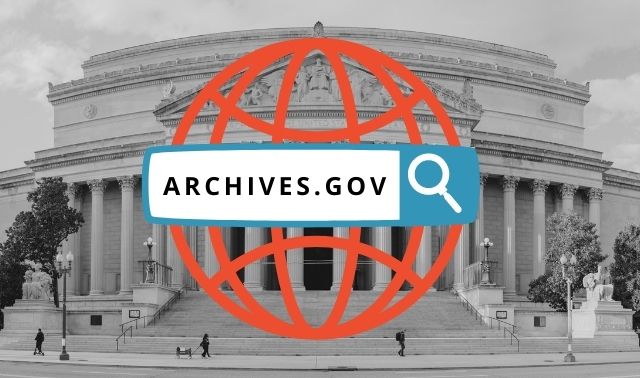Sign up for the Family Tree Newsletter Plus, you’ll receive our 10 Essential Genealogy Research Forms PDF as a special thank you!
Remember flipping through the Sears catalog as a kid? Anything you could ever want was in there, it seemed, in glorious color with glowing descriptions, and all just a phone call away.
Perhaps it’s less obvious, but the family history wares described in library catalogs are just as exciting—family and county histories, newspapers, old manuscripts, microfilmed records and other resources that aren’t on any Web site. Finding these genealogical goodies listed in online library catalogs, though, isn’t quite as easy as picking out the fastest Big Wheel from Sears’ holiday wish book. Library catalogs all look different and describe their materials differently. Word your search wrong, and you could end up with millions of irrelevant matches, or none at all. Then there’s the matter of borrowing items from a distant library.
We’re here to make sure you don’t miss out on essential genealogy information. Our five-step guide to using library catalogs will help you home in on the right resources for your family history search.
1. Target catalogs to search.
First, identify libraries likely to hold helpful resources. Don’t worry if they’re in a faraway town—we’ll help you access materials from distant institutions in step 5. Consider searching these library catalog resources:
•
Major genealogy libraries: Put the Church of Jesus Christ of Latter-day Saints’
Family History Library (FHL) in Salt Lake City at the top of your list for its vast collections of county and foreign records. Its user-friendly catalog is geared to genealogists (
see our FHL catalog search tips). The FHL is digitizing its microfilms; some catalog entries already link to the online record or book.
Sure, it’s large, but the FHL doesn’t have everything you’ll need. Eric Grundset oversees another major collection, the Daughters of the American Revolution (DAR) Library in Washington, DC. “Don’t be fooled by our name,” he advises. “With ‘American Revolution’ in our name, people think that’s all we have, when we actually have a very broad collection of materials for the past 400 years.” See our list of other major genealogy libraries you’ll want to search.
•
Libraries where your ancestors lived: Grundset also urges you to check libraries in towns where your ancestors lived for “items on families, places, churches and cemeteries that may have been printed and distributed only locally.” Local repositories also are good places to find historical newspapers, city directories and maps. Use
PublicLibraries.com and
Libweb to find these organizations.
• State archives and university libraries: For local, county and state records and history books, check state archives and historical societies. Their catalogs typically include more-detailed descriptions and more personal names than you’ll find in public library catalogs.
Most college and university libraries have large, diverse book collections. Sometimes you need to be a student or faculty member to borrow books; if so, see if you can make a research request or get the book you want from another library.
•
Union catalogs: Instead of repeating the same search in one library catalog after another, use union catalogs to scour the holdings of multiple institutions.
WorldCat is the largest union catalog with 1.2 billion listings in more than 10,000 libraries worldwide. The first time you click an item in your search results, WorldCat asks you for your ZIP code, then gives you the closest repository with that item. Keep in mind that WorldCat doesn’t cover all libraries—for example, it doesn’t search the FHL or the DAR library.
Regional union catalogs cover libraries in a particular area.
Melvyl covers the University of California libraries plus the state library and historical society. As a Minnesota resident, I use the
MnLINK Gateway to search holdings throughout the state, including the Minnesota Historical Society Library. If you’re searching the catalog of a union member, you’ll typically get the option to search the whole network.
The Library of Congress’ National Union Catalog of Manuscript Collections (NUCMC) has nearly 1.5 million entries for family papers, diaries, business records, and other manuscripts at libraries around the world. A union catalog I created, the Genealogical Library Master Catalog, focuses on genealogy and local history libraries. You can search it through Ancestry.com ($155.40 per year).
2. Know what’s in the catalog.
Before you search a library’s catalog, know what materials are supposed to be in it. “Some materials aren’t listed in the online catalog,” says Patricia Van Skaik, manager of the
Public Library of Cincinnati and Hamilton County Local History and Genealogy Department. “Many libraries use separate databases, card files or librarians’ knowledge to locate microfilm materials, maps, periodicals, obituary files, city directories, and surname indexes and files.”
These quirks show why it’s helpful to learn a little about your target library. If you can’t find an item in the catalog, don’t assume the library doesn’t have it. “Ask the librarian, who’s most familiar with the catalog’s idiosyncrasies,” Van Skaik urges. If you can’t visit in person, call or use the Ask a Librarian link on its Web site.
3. Understand how catalogs work.
When a librarian enters an item in the catalog, she includes information in fields for the call number, title, author, publisher, content description, subjects and format (print, microfilm or CD). To find the resource you need among the thousands or millions of entries, you have to hit on the terms she entered.
“Different libraries assign different categories or subject headings to the same source,” says Van Skaik. One catalog’s subject entry for a book called Smith Family in Rhode Island might be just Smith Family; another catalog’s entry may contain the subjects Smith Family, Williams Family (a related family), Rhode Island—Genealogy, and Providence (RI)—History. The more subject terms a catalog contains, and the more detailed its content descriptions, the easier it’ll be for you to find relevant items.
Place names vary, too. “Locations can be spelled a variety of ways, even in the same catalog,” notes Van Skaik. “Some libraries identify locations by county, others by cities and towns.” Most catalogs don’t find similar spellings or alert you to the standard format for a place name (the FHL is an exception).
In most library catalogs, the basic search is a keyword (also called word or phrase) search that’s broad—it’ll find your search term no matter where it is in a catalog entry.
With an advanced search, you can find terms in specific fields, and you might be able to use the Boolean operators AND (find catalog entries containing all search terms) and OR (find entries containing either term), and sometimes AND NOT (ignore entries with this term). Advanced searching is more targeted, but it’s easier to miss something—a subject search, for example, finds results only if your search term matches a word the cataloger entered in the subject field.
4. Formulate your search carefully.
If you’re looking for a specific book, of course, it’s fastest to search by author or title. But if you’re browsing, use a keyword or subject search. Here are some suggested queries for key genealogy resources:
• Family history book: Search on a surname and the word family: for instance, Cooley family. Keep in mind that a book’s entry in the catalog might include only a few names, such as “Smith family” and “Jones family,” even though the book mentions many families. A catalog entry also might include individuals’ names, but usually only those who are prominent in the book.
A basic search is fine for rare names: Search WorldCat for Schaubhut family and you get just two matches. But common last names are another story. A simple keyword search of WorldCat for Hall family produces more than 13,000 matches, many of which aren’t family histories. Home in on the right resources using the advanced search, which lets you search on keywords, title, author and subject. A subject search on Hall family produces 2,040 matches, still too many to browse easily. Adding the keyword Wallingford (my Halls’ Connecticut hometown) to my subject search narrows the results to seven books and a manuscript collection.
“Sometimes the name will be grouped with other similar spellings, or you may be told to see another term,” says Janice Schultz, librarian at the
MidWest Genealogy Center in Independence, Mo. For example, do a subject search of the library’s catalog for
Crume family, and you’ll get cross references to the subject terms Crumm, Crummel, Crummer, Crummies and Crump. Click one, and you’ll see materials matching that term.
• Local history book: Town and county histories are helpful even if they don’t mention your family. You could learn when towns and townships were formed, where settlers came from and what churches were in your ancestors’ neighborhood. To find local histories, search on the name of a town, city, county or state and the word history—for example, Mercer County Illinois history. Experiment with spellings and place names, trying both the town and county. Try full state names (Pennsylvania) and abbreviations (Pa. or Penn.).
You might even save time by using the advanced search to combine multiple searches into one. Instead of doing separate searches of MnLINK for Mankato Minnesota history and Mankato Minnesota genealogy, I searched for the subject heading Mankato Minnesota AND history OR genealogy (in catalogs offering a subject heading search, you can look for any word in a multiword subject). Matches included vital records books and town histories; among them was one called Mankato: Its First Fifty Years with pictures of my relatives Henry and John J. Shaubut.
• Genealogical records: To find books of compiled gravestone transcriptions, marriage indexes, city directories, plat books and other records, Schultz advises looking for a place. Run a keyword search on a place name plus the word genealogy or a record type, for example, marriage Augusta Virginia. A land records search might look like Augusta Co. Va. deeds or Augusta County Virginia deeds.
Again, you’ll need to play around. “Records can be cataloged in multiple ways even by the same library,” says Van Skaik. “For example, marriage records could be described as registers of birth, etc. [with the etc. referring to other vital events], marriage bonds, marriage records or marriage licenses.”
To avoid missing something useful, start your search broadly with just a place, such as Allegany County, NY. If you get too many hits, add genealogy or a type of record, such as land. When you find a promising catalog entry, Schultz recommends you examine the subject headings and click those to find similar resources.
• Books by and about your relatives: Since a library catalog entry doesn’t include all the names a book might mention, it’s usually more productive to search on relatives’ last names without including first names. But you might get lucky. The obituary of my relative Mary (Barbero) Parry says she wrote “several books on education as related to the human voice,” including Vocal Resonance, Its Source and Command. A catalog search for the title shows it was published in 1941 under the fancied-up pen name Mame Barbereux-Parry.
Your relative doesn’t have to be a household name to be the subject of a biography or unpublished manuscript. According to an old, yellowed letter, my relative Evan Jones was “a missionary to the Indians.” I searched MnLINK for the keywords missionaries indians, in hopes Evan was mentioned in a book on missionaries. To my surprise, I found a 500-page tome called Champions of the Cherokees: Evan and John B. Jones. Had I thought Evan Jones was ever the subject of a biography, I would’ve searched on his name and found the book much faster.
Get the book or manuscript.
Once you find promising references in online catalogs, you need to get a hold of the materials. Of course, if the library’s nearby, it’s just a matter of printing the catalog records, taking a drive and whipping out your library card. But if the book you need is in a distant repository, use these strategies:
• Search
Google on the book title to see if the text is posted on a USGenWeb <usgenweb.org> county page.
• Ask your library if you can borrow the book or microfilm through interlibrary loan. That’s how you can access most items in the National Genealogical Society’s lending library, housed at the St. Louis County Library.
Check the online catalog; books whose call numbers don’t start with an R are lendable. If interlibrary loan isn’t an option, ask if the library can get photocopies of the pages you need.
• Rent FHL microfilm through a local Family History Center.
• Most libraries answer brief research requests, such as checking a book’s index or making copies (you may have to pay a fee). Contact the library or consult its Web site for instructions.
Need some assistance searching your library’s catalog? Check its Web site for search tips. You also might find guides such as Allen County’s “pathfinders” to its English and Welsh, Scottish, German and other collections. And take Van Skaik’s advice about asking the staff. After all, they know all about the genealogical goodies inside libraries—and will happily point you to the items in your family history wish book.
From the March 2009 Family Tree Magazine




